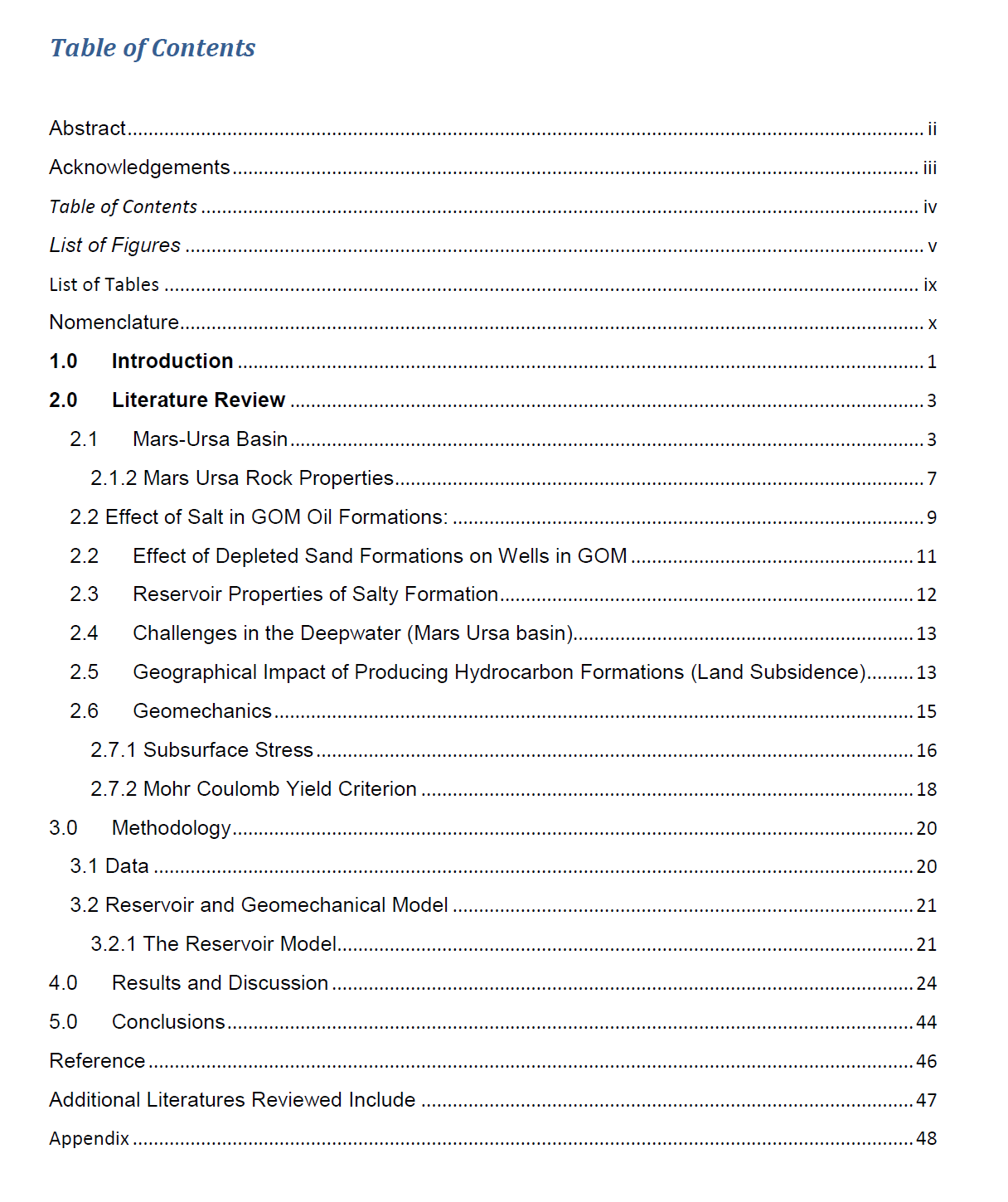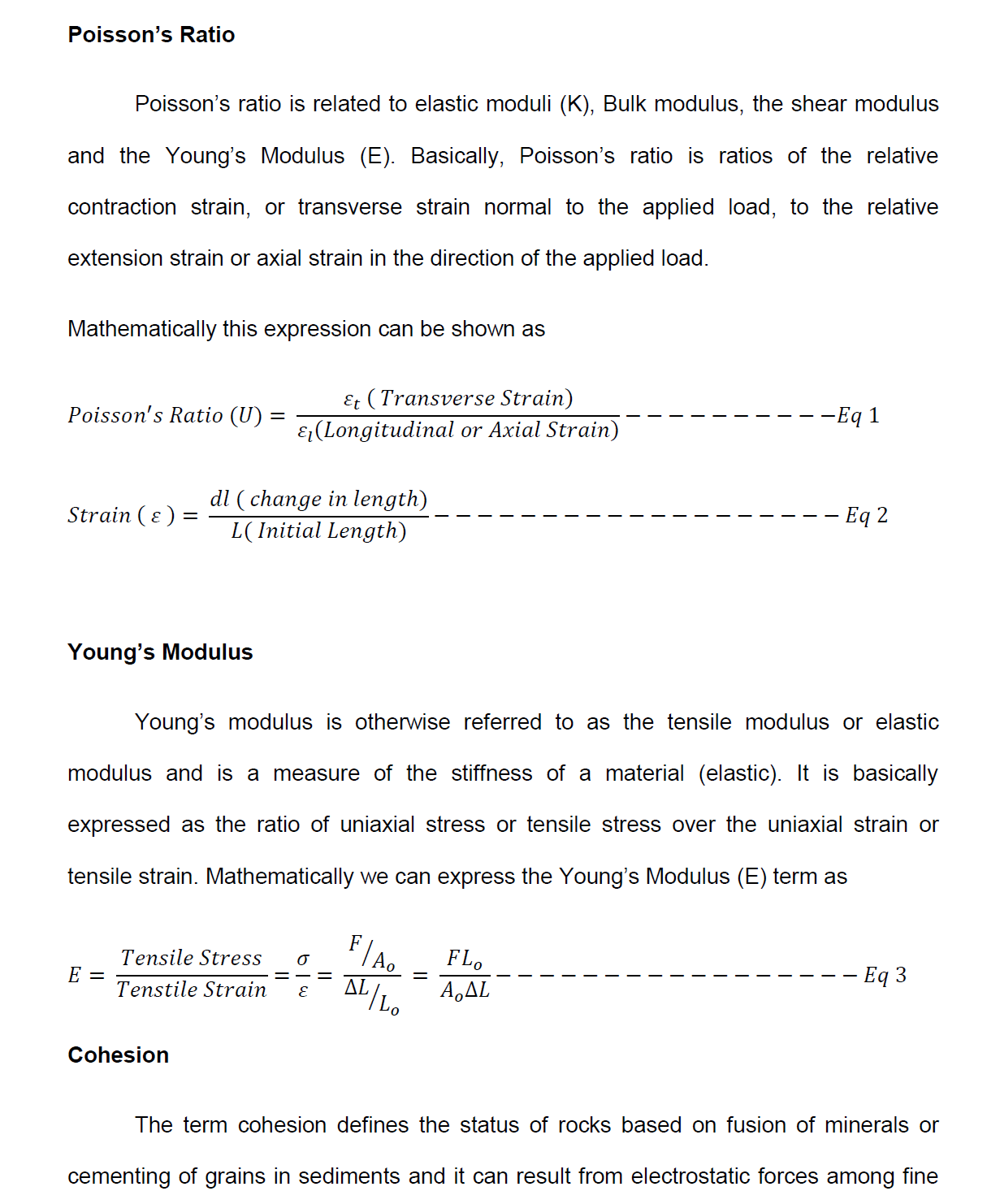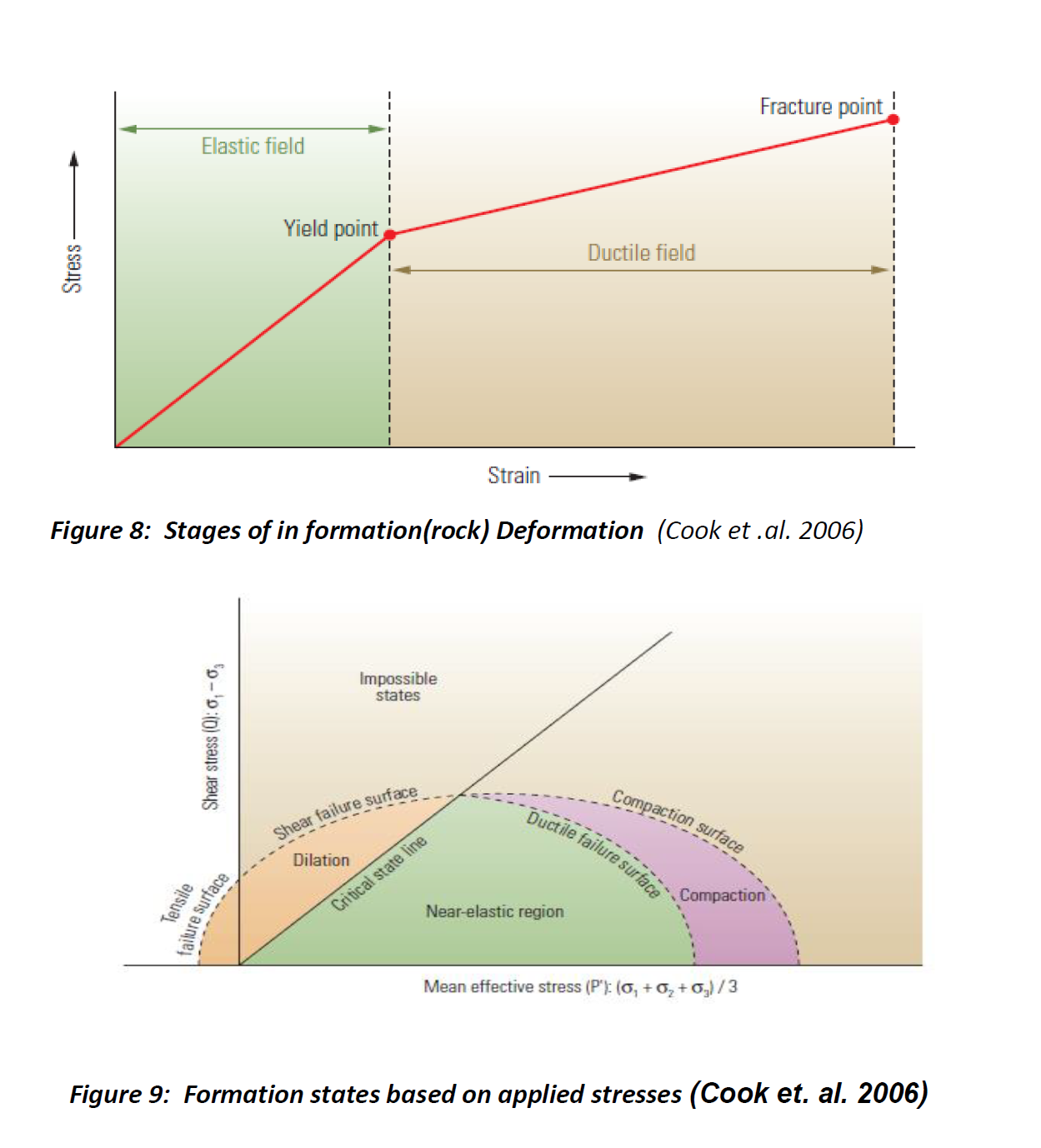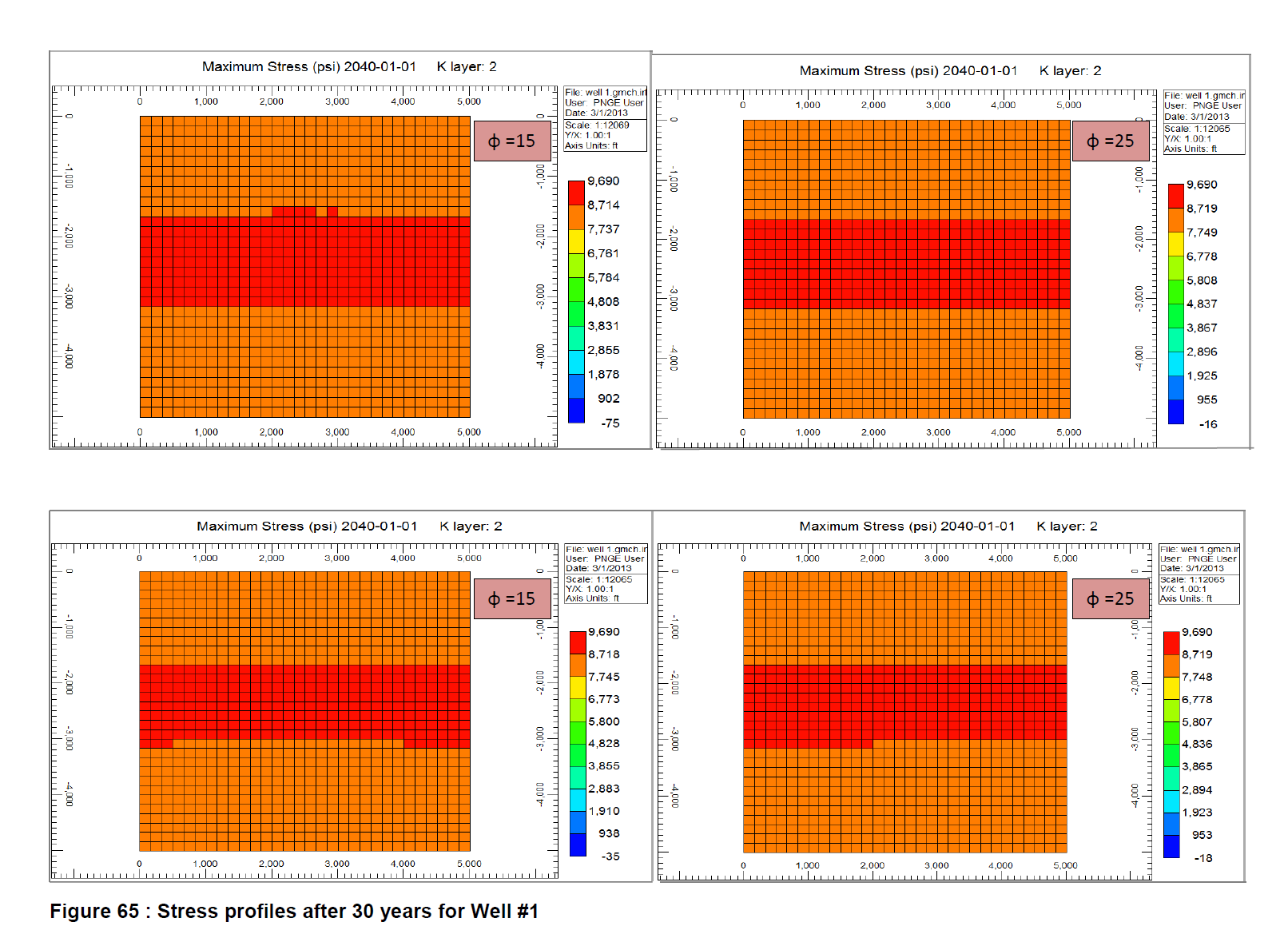本论文研究了墨西哥湾Mars-Ursa盆地的水平井筒完整性或稳定性,利用该高产地层的不同地质力学特性分析了生产井周围和生产地层的应力积聚。使用CMG模拟器分析了不同的情况,其中考虑了单个和多个生产水平井的情况。所建立的模型既考虑了基本的储层模型,也考虑了地质力学模型。所考虑的个别情况包括生产地层的不同地质力学性质,但这些性质包括摩擦角、内聚力、杨氏模量以及泊松比。所分析的模型涉及这些不同的地质力学性质对生产地层和含盐地层中最大应力的影响。对于应力分析,使用了莫尔-库仑模型。
结论包括:(1)地层中形成的应力的总体大小与摩擦角和内聚力有关,摩擦角越大,生产井筒周围的应力积聚越小,而内聚系数越高,应力积聚就越大。(2)油气生产的结果是,应力在井筒周围的地层中积聚。在生产的前十五年,应力积聚非常显著,但当累计油气产量达到平稳时,所有井的应力积聚都会稳定下来。(3)靠近盐层的地层因生产时间长,降低了应力积聚;(4)超压地层对Mars ursa盆地浅层应力的影响更为显著。这对于#1和#2井来说是显而易见,因为与所研究的其他井相比,在这些层中建立了更高的应力。(5)Mars ursa盆地井设计应考虑前15年的应力累积,如设计得当,能够承受早期的生产阶段,井筒的完整性不会受到损害。
阅读原文
Wellbore Stability in Ultra-Deep Formations of the Gulf of Mexico
This thesis work looks into Horizontal wellbore integrity or stability in the Mars Ursa Basin of the Gulf of Mexico using different geo-mechanical properties of this highly producing formation in analyzing stress build up both around the producing wells as well as the producing formations. Different cases were analyzed using the CMG simulator where consideration was given to cases of single as well as multiple producing horizontal wells. The model built considered both the basic reservoir model as well as geo-mechanical models. The individual cases considered included different geo-mechanical properties of the producing formation these properties however include frictional angle, cohesion factor, Young Modulus as well as Poison ratio. Models analyzed involved the effect of these different geo-mechanical properties on the maximum stress in the producing formations as well as salty formations. However, for the stress analysis, Mohr Coulomb model was used.
Factors that majorly affected maximum stress mostly were found to be frictional angle and the cohesion factors, formation with higher porosity and permeability having higher production developed higher maximum stress compared to low producing zones also high frictional angle at producing formation resulted averagely into lower maximum stress build up while low frictional angle resulted into higher maximum stress build up. Also, formation with high cohesion factor shows higher maximum stress build up while those with low cohesion factor shows lower maximum stress build up.
A general trend however observed in all the cases indicated that whatever geo-mechanical factor or combination of these factors satisfy high production rate will generate higher stress build up both around the wellbore and the producing formation.





